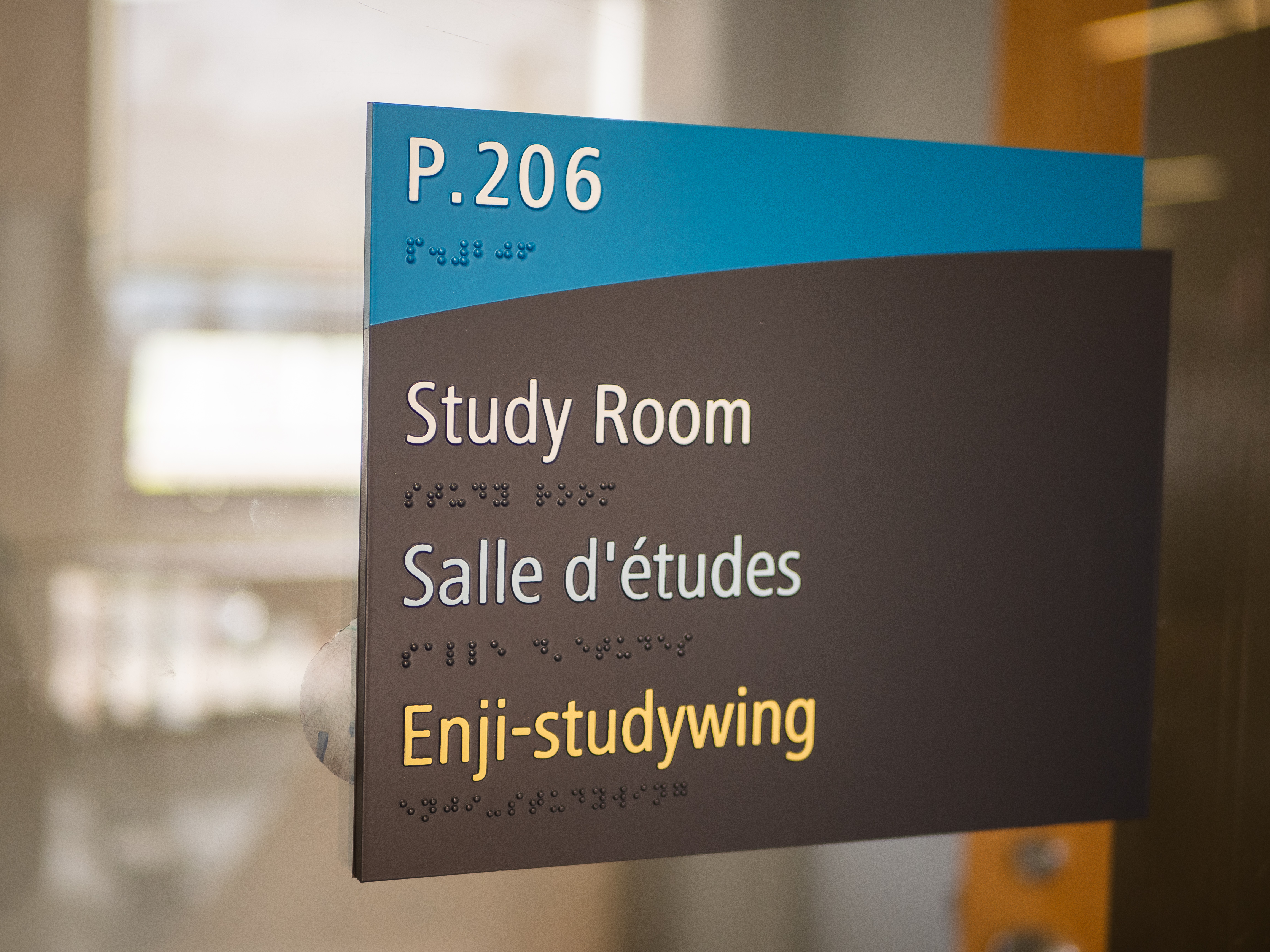Walk anywhere on the Laurentian University campus, located on Anishinaabe territory in Sudbury, Ont., and you can’t miss the new trilingual signs.
In addition to English and French, the university has labeled the classrooms, buildings and other student spaces in Anishinaabemowin, the language of the Anishinaabe.
“It is a very important symbol that [the students’] distinct identity is recognized and acknowledged by the university,” said Mary Ann Corbiere, a native speaker of Anishinaabemowin.
Cobiere is a professor who teaches the language at the University of Sudbury, and helped translate the new signs at Laurentian. She is currently working on an Anishinaabemowin dictionary.
Daniel Côté, the acting director of the School of Indigenous Relations at Laurentian, said the signs are meant to recognize the history of the land and allow students to feel at home on campus.
The university added the signs over the summer after a recommendation from the Truth and Reconciliation Task Force (TRTF).
The Laurentian University Native Education Counsel (LUNEC) established the TRTF in the fall of 2018, and it is tied directly to outcome 21 of the university’s strategic plan which supports the Truth and Reconciliation Commission’s 2015 Calls to Action.
“Recognizing our culture and language is really important,” said Alicia Williamson, a second-year student at Laurentian and the president of the Indigenous Social Work Student Council. “Especially for these Western institutions, which often don’t always recognize Indigenous knowledge as equivalent.”
The process of adding the signs wasn’t easy. Difficulties arose around the translation of English words and phrases into Anishinaabemowin, both culturally and in the way the language expresses ideas.
Cobiere tried to translate English terms in a way that sounds natural, but some are too complex in Anishinaabemowin.
“It would require too big a sign,” joked Corbiere. “Or too small a print.”
Further complicating the matter, many English terms are now used in Anishinaabemowin. “There’s no mono-lingual anymore,” said Corbiere. “People are used to throwing English expressions into their everyday speech.”
Other efforts have been made on campus to help Indigenous students, like the Indigenous Sharing and Learning Centre, which provides cultural, social and academic resources to Indigenous students. The university also has a strategic plan that lists goals for becoming a more inclusive institution by 2023.
“It makes First Nations students feel more welcome,” said Stephanie Pheasant, the LUNEC representative from the Indigenous Students Circle.
“Language is super important to our culture and any step forward is progress,” said Williamson. “It’s not the only step that can be taken, but it is a step forward.”
In a previous version of this article, Mary Ann Corbiere’s name was misspelt. The Charlatan regress the error.
Feature image provided.






